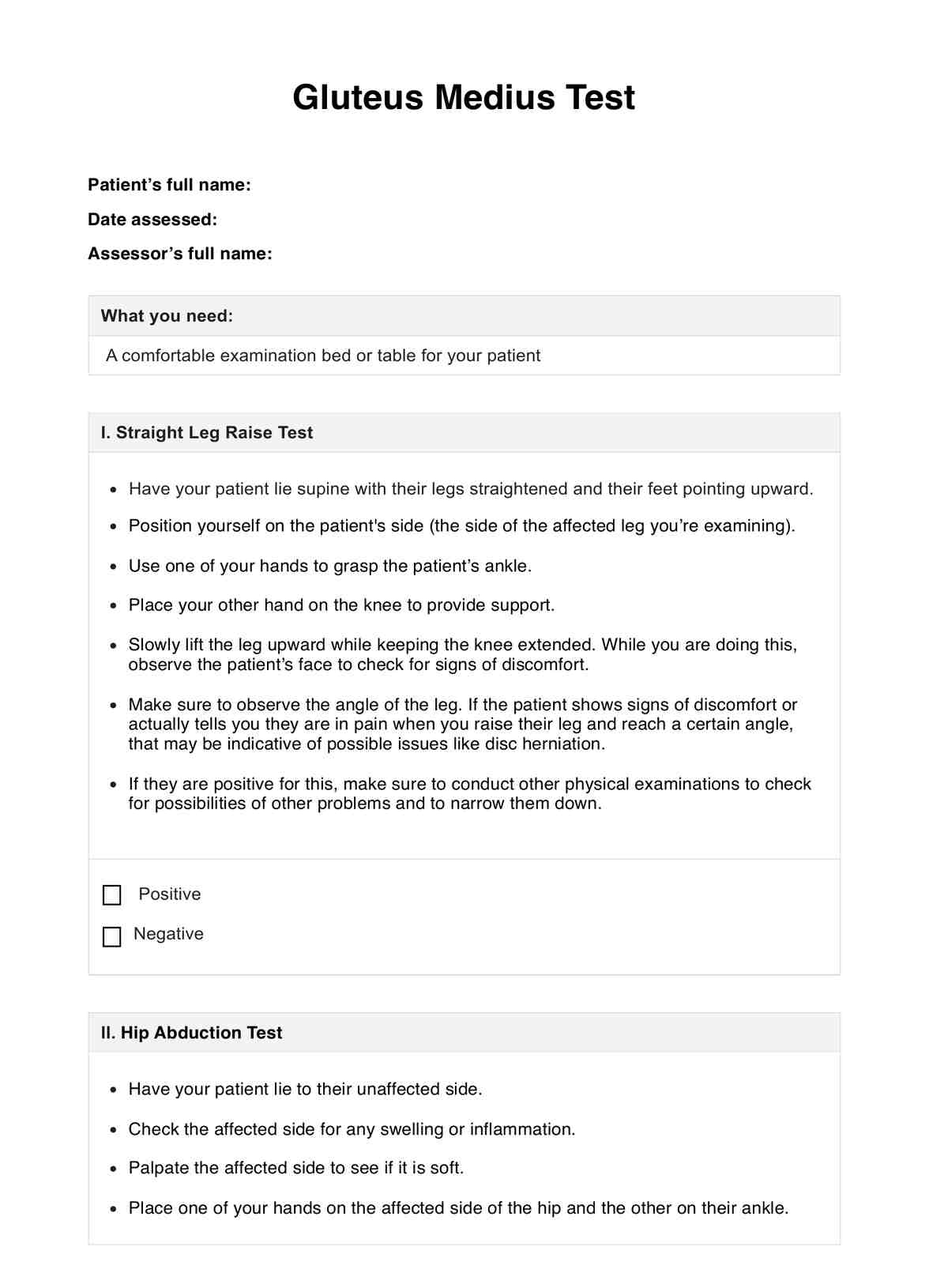It shouldn’t take more than five minutes to accomplish this, given how simple the instructions are.

Gluteus Medius Test
Perform the Gluteus Medius Test to check for the possibility of a Gluteus Medius Tear in your patient. Learn more about this test through this short guide!
Gluteus Medius Test Template
Commonly asked questions
If your patient has a Gluteus Medius injury or tear, then yes, this test is painful. But the pain will be a good indicator of a problem with the Gluteus Medius. It’s just a matter of confirming what the problem is. Is it simply strained? Is it a tear? Later tests should confirm this.
Yes. This test requires you to check for swelling, inflammation, pain when abducting the affected side, and if the affected side is weak compared to the unaffected side. If all these check out, then they are likely to have a Gluteus Medius injury. Imaging tests should confirm it.
EHR and practice management software
Get started for free
*No credit card required
Free
$0/usd
Unlimited clients
Telehealth
1GB of storage
Client portal text
Automated billing and online payments











